Defense Department Weighing COCOM Realignment and Rebrand
The Pentagon is considering doing away with two combatant commands---and no longer calling them combatant commands.
The Pentagon is considering doing away with two combatant commands—and no longer calling them combatant commands.
Defense News (“DoD Weighs Major COCOM Realignment“):
The Pentagon is considering a major overhaul of its geographical combatant commands, possibly realigning oversight within hot-button areas of the world and eliminating thousands of military and civilian positions, according to defense sources.
While the plans for combatant command (COCOM) realignment and consolidation are still notional, sources say some options include:
- Combining Northern Command and Southern Command to form what some are calling “Americas Command” or “Western Command.”
- Dissolving Africa Command and splitting it up among European Command and Central Command.
- Expanding Pacific Command to include Afghanistan and Pakistan, which are part of Central Command.
In all, the realignments could shutter two COCOMs and eight service-supporting commands, totaling more than 5,000 people, both uniformed and civilian.
This would be a bold step, although the cost savings would be minor by Pentagon standards. Offhand, all of the proposals listed above seem odd. Southern Command, which oversees Latin America minus Mexico, is arguably our most functional COCOM, characterized by repeat assignments and language and cultural proficiency. AFRICOM is largely useless but the symbolism of shuttering what is already a Potemkin COCOM so soon after standing it up would be horrible. While AfPak is part of the Asian continent, nobody thinks of it as Asian.
But there’s at least some real thinking behind this.
Combining Northern and Southern commands could lead to greater resources for activities in South and Central America, which experts say has long been DoD’s most neglected region.
Combining the regions could better address cross-border issues — particularly drug trafficking — among Mexico, South America and the United States, said Bob Killebrew, a retired Army colonel and senior fellow at the Center for a New American Security.
Mexico is part of Northern Command, which also includes the contiguous United States, Alaska and Canada.
“[I]t makes … sense not to have a kind of artificial DoD boundary, not only between Mexico and Central America, but between Mexico and the American border as well,” Killebrew said.
It strikes me that the more obvious solution would be to place Mexico into SOUTHCOM, where it belongs linguistically and culturally. For all intents and purposes, NORTHCOM isn’t a fighting command but an administrative creature. So, combining the two would simultaneously take away SOUTHCOM’s unique culture while lumping it in with the least prestigious of the COCOMs; it’s not at all clear why that would improve focus on Latin America.
Organizing oversight of Africa has been a topic of debate — mostly in the academic community — ever since Africa Command split from European Command and became a stand-alone COCOM in 2008. Before that, European Command oversaw much of the continent, with Central Command overseeing the Horn of Africa.
“The [oversight] that was diffused over multiple commands really wasn’t something that was in our best interest nor in the best interest of our partners on the continent,” said Kip Ward, a retired Army general who was the first commander of Africa Command.
Major changes to the existing Africa Command construct are not likely during a COCOM reorganization, experts say. US military operations in Africa, ranging from the 2011 overthrow of Moammar Gadhafi in Libya to the recent campaign against terrorists in Mali, underscore the need for a dedicated COCOM, defense officials say.
Since its establishment, Africa Command has added value and has been well received on the continent, Ward said. ”I think that the focus that AFRICOM is able to bring to that vital, important part of the world is still important,” he said.
AFRICOM is an odd duck but at least sends a strong signal that we care about Africa. Unique among COCOMs, it’s headed by a four-star officer with a civilian deputy, symbolizing that it’s as much a diplomatic mission as a military one. And it has essentially no organic fighting capability; it’s a headquarters staff. Headquartered in that most venerable of African cities, Stuttgart. Still, I can’t see it going anywhere.
Meanwhile, experts agree that Afghanistan, Pakistan and India should fall under the same COCOM, regardless of whether it’s Pacific or Central. India falls under Pacific Command while Pakistan and Afghanistan are part of Central Command.
Since security, foreign policy, economic and trade issues with India predominantly involve Pakistan and vice versa, placing them under the same COCOM could better streamline US military ties with each country, some experts say.
The same is true for security and policy issues involving Afghanistan, since much of the violence in the nation is along the Pakistani border.
“It’s better that the people who are dealing with India are the ones that are at least fully aware of, or completely in the picture, of what was discussed between two top dignitaries between the US and Pakistan,” said Hassan Abbas, a former Pakistani government official who served in the administrations of Prime Minister Benazir Bhutto and President Pervez Musharraf.
“If they are the same team, or the same group of people that are in the same institution who are dealing with India, it actually provides more leverage for the United States and more opportunities to go for a coherent policy rather than dealing through two different commands,” said Abbas, a senior adviser and fellow at the Asia Society and a professor at National Defense University’s College of International Security Affairs. He stressed that this is his personal view, and he was not speaking for the university or the US government. “I think this makes sense.”
So do I. While South Asia isn’t part of the Western notion of “Asia,” it has to be treated as a unit. Somebody, and it probably doesn’t particularly matter whether it’s CENTCOM or PACOM, should own it.
The growth in headquarters staff sizes at the COCOMs and across the entire military has been a major issue of late.
Between 2010 and 2012, staff sizes at the six geographical COCOMs have increased more than 7 percent, adding nearly 1,000 civilian and military positions.
In addition to those numbers, each service operates its own subordinate commands to the individual COCOMs. Many positions at the service commands are redundant to positions at the COCOMs, according to the Government Accountability Office.
“If they were to streamline or combine [COCOMs], you certainly won’t have as many components,” said Arnold Punaro, a retired Marine Corps major general and former Senate staffer who chairs the Reserve Forces Policy Board. “It depends on how they do it.”
The main cost savings to be had is in getting rid of the Service staffs. If there’s anywhere that DoD ought to operate jointly it’s at the four-star headquarters level.
Pentagon officials overseeing the reorganization should also consider changing the title from combatant commanders to something less invasive, Killebrew said.
“It’s a horrible [title] because what most of these commanders do is military assistance and military cooperation with other countries,” Killebrew said. “When you say you’re a combatant commander the first thing somebody in a small country says is, ‘But I don’t want to go to war. I just want to talk.'”
From time immemorial, we called them Unified Commands and their bosses commanders-in-chief, or CINCs. Back in 2002, Secretary of Defense Donald Rumsfeld ordered that we stop calling them CINCs since there’s only one commander-in-chief, the president. So, we started calling them “combatant commanders.” While he was right on the commander-in-chief issue, the resultant name change was awkward, putting a combatant commander in charge of a combatant command, but also politically insensitive. While the combatant commanders are, first and foremost, warfighters, they’re also diplomats. The branding is therefore unfortunate externally.
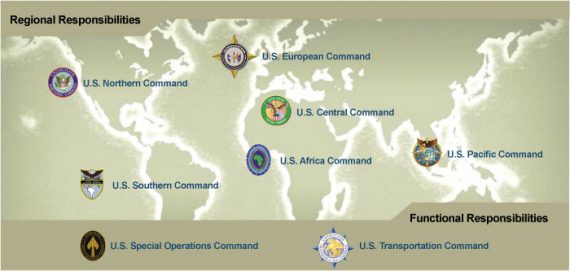

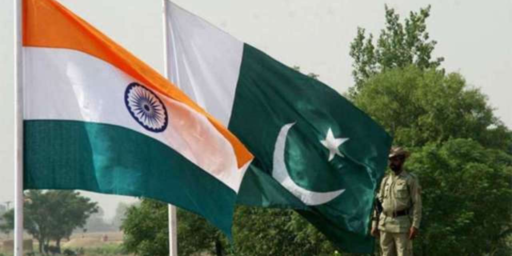
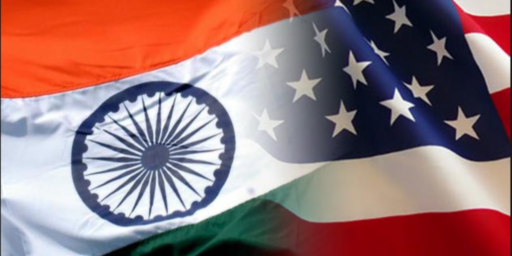

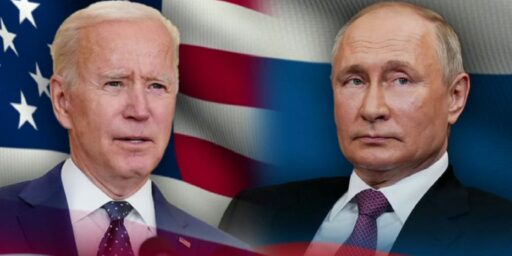
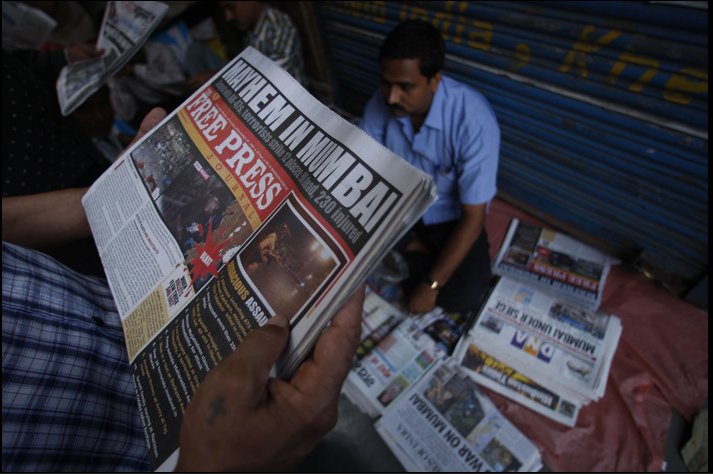
When generals have nothing else to do in the short term, they cannot resist reorganizing the wiring diagram. This sounds like another random reorganization to give the appearance of progress and activity.
When the ‘tail’ outweighs the ‘teeth’ to the obscene degree that America’s professional soldiers have made it, no ‘re-organization’ will actually achieve the sort of lean, muscular and quiet presence that is required for real security in the world as it is.
We long ago ‘crossed the Rubicon’ and passed from the era when we resembled the Roman Republic. We are now enjoying the decadence of the late Empire. The legions will march as ordered into the Black Forest and never return. But the Generals and their staffs will remain until we grow tired of their irrelevant rearranging of the deck furniture.
(A mixed metaphor but clear, I hope.)
They should get rid of US Strategic Command too
NORTHCOM has as one of its core missions the defense of the CONUS, specifically air and missile defense, with the old NORAD mission rolled into it. It doesn’t belong with SOUTHCOM’s mission. If they consolidate the two COCOMs, at least bring back NORAD or renaming it NORAAMDC (North America Air and Missile Defense Command) and put it under STRATCOM.
AFRICOM isn’t going anywhere. The continent has long been neglected in the old days when it fell under EUCOM’s AOR. With all the stuff going on in Mali and Somalia right now, I can’t see it going back to a backwater command.
@lookingforwaste: To me, the two functional commands–Special Operations Command and Strategic Command–are the ones that make the most sense. They oversee distinct missions on a global basis.
Last time I checked in 2013 there’s more than two functional COCOMs. While each of them sit around with their own distinct mission on a global basis, a many of their roles now have begun to overlap and cross each others turf boundaries with their bloated staffs trying to find their own rice bowl. While I agree that their distinct missions should not be dissolved, their overlapping missions most certainly require trimming up.
Whatever happened to the SAC? Does it have a new name? I used to see programs and movies where they had this huge electronic map of the world and a lot of military people sitting at electronic consoles tracking all air traffic, ready to respond in case of attack. They also had these B52 bombers flying constantly making sure the Russians did not launch some sort of sneak attack.
Do they still do this now? I know they have the B1, the B2, and the Stealth. They might even have something else. What exactly is in place to detect and shoot down enemy planes if they should enter US airspace? Is it possible for a bomber loaded with some sort of nuclear bombs or smart bombs from some other country or terrorist group to get into the US undetected?
I also read an interesting book some time ago: “Germany Will Try It Again”
@lookingforwaste: I was going by the graphic. There’s also TRANSCOM. CYBERCOM exists as well but it’s not yet an independent command, being subordinate to STRATCOM.
@Tyrell: SAC was never a major command but an Air Force command. It got inactivated right after the Cold War and its functions have been taken over by something called Air Force Global Strike Command.
James,
CYBERCOM has been a full COCOM going back to 2010 or so. It used to be a JFCC under STRATCOM, but GEN Alexander successfully lobbied Congress to have it be named as a full COCOM, and he was promoted to 4 star commander of the new CYBERCOM (DIRNSA is only a 3 star billet). STRATCOM no longer has any cyber functions under its responsibilities, it being moved to CYBERCOM.
James,
SAC was inactivated after the Cold War ended, but it became a COCOM when the Navy’s strategic nuclear mission was rolled into, and become USSTRATCOM. The USAF component was moved to Air Combat Command and Space Command, but looks like now it’s under AFGSC. I’m an old SAC guy and miss those days when the organization knew its mission and how to do it.
@DC Loser: I thought that was the case but OSD says otherwise.
CYBERCOM isn’t listed on its COCOM page: http://www.dod.mil/pubs/foi/combatcomm.html
And CYBERCOM’s own page, which hasn’t been updated since December 2011, insists “SCYBERCOM is a sub-unified command subordinate to U. S. Strategic Command (USSTRATCOM).” http://www.stratcom.mil/factsheets/Cyber_Command/
Hmmm….I stand corrected. But Alexander being a 4 star has equal rank to the STRATCOM commander. If it’s a subordinate command, he should revert back to a 3 star billet.
@DC Loser: There’s been MASSIVE star creep in recent years. We’ve got four stars reporting to four stars who report to four stars. It makes no sense in terms of a chain of command.
Did I miss where they say what they are changing the name COCOM into? Got to say that AFRICOM and SOUTHCOM could go away without much notice, nobody pays attention to conflicts/crisises in those AORs with any interest. Moving anything into PACOM makes no sense – it’s AOR is huge and a challenge with PRC and DPRK both as issues.
@DC Loser: When I was a child, we watched the news and were in awe when they showed those B52’s taking off, one right after the other. Going through the cold war was an experience. It was nice to know that people like you were watching out.
You neglected to acknowledge The Bahamas as part of NORTHCOM… fast-boat drug trafficking central.
You’ve totally overlooked COMICOM which deals with The Avengers, The Justice League, Iron Man, SHIELD, certain of Batman’s overseas work. . .
Yeah, I know, it was easy. I couldn’t help it.
All these discussions will require 100s of meetings, expensive TDYs, “war games”, studies and 1000s of PowerPoint slides. It should give the DoD something to do as we pull out of conflicts
Stuttgart is in Germany. Was the author being sarcastic? If so, I missed it.
It isn’t any more silly than HQ CENTCOM being in Tampa. Where would one put HQ AFRICOM on the continent, in a country where they would welcome us and have the infrastructure to host a major US COCOM and its staff and dependents, plus having the security to protect them all?
First, align DOD and Department of State to cover down on the same geographic space. DOD has the Geographic Combatant Commands, State has the regional bureaus. Yet the two executive branch departments who arguably conduct the preponderance of Foreign policy work do not share the same geographic areas of responsibility. In addition to realigning our maps, we should combine the two departments into one and call it the Department of Strategic Services. Place the DOS civilian regional bureau chief as the head of a realigned geographic organization and the 4 star as his/her deputy. The DoS chief would be a senior Ambassador, 3-4 Ambassadorships, like a Ryan Crocker, and would have direct oversight of Ambassadors in each country to ensure efforts on a country by country level are aligned with broader strategic goals. The 4 star deputy would wnsure military efforts aligned appropriately. Combine staffs to truly build joint, interagency institutions and clean up the civilian-military roles when conducting foreign policy and military engagement with our partner nations. These comments are my own and do not reflect official views of the Department of Defense.
@DC Loser:
It is because the CYBERCOM Commander is also the NSA Commander at the same time.
@Skiptracer,
Both those positions should be 3 star billets. I find it problematic that the DIRNSA (with Title 50 responsibilities) and CYBERCOM CC (with Title 10 responsibilities) have inherently different sets of responsibilities. They should not reside in the same person.
@Pete Nguyen: Yes. He’s saying how absurd it is for Africa Command to be headquartered in Germany and not, say Djibouti or Kenya.
Cute. Fortunately we now know that this was based mostly on wishful Axis fantasies. But it makes great source material for writing post-WWII conspiracy novels and RPG scenarios :-).
I’ll renew my comment made in another context about how not-interested in this one would be if actually “outside the beltway.”
@JohnMcC: I’m interested in this because I’m a security scholar and a former Army officer. Conversely, relatively few people inside the Beltway could tell you what a COCOM is.
@DC Loser I assume you where replying to Pete with the silly comment. I believe Pete’s point wasn’t that the HQ AFRICOM wasn’t in Africa but James’ writing “Headquartered in that most venerable of African cities, Stuttgart” . If James was being sarcastic, that is one thing. If not than he was wrong on that technicality.
@Pete Nguyen: @Jack: I’m not a geography whiz but, yes, I was being sarcastic. I’ve been to Stuttgart many times, in fact.
I do get that finding a place in Africa that can host AFRICOM is challenging, to say the least. I just find the headquartering in Germany amusing, especially since it’s essentially a staff without a COCOM.
AFRICOM being in Stuttgat is easily understood if one understands its origins. It was created out of existing staff from EUCOM, who surprisingly, is also headquarted in Stuttgart. Thus this venerable Swabian city is the host of two major US Combatant Commands, a singular achievement! About the only place that I can see them finding a host would probably be in somewhere plush, like South Africa (Cape Town?)
Stratcom has little to do with SAC. 5-10% SAC functions went to ACC. Even heard of JSTPS? Did you know a Navy Admiral lurked in the basement of Building 500 in Omaha?
Then they absorbed Spacecom.
@James
No problem. I don’t see why it is amusing but to each their own. Although as you have noted in your original article they are now a COCOM. The change of tempo on the Continent for last decades and for operational clarity, IMO justifies the creation of AFRICOM. I know personally that the forces there were screw over logistically and attention wise at least during the early 1990’s and 2000’s. Granted some of that in early 2000’s was to be expected and I suspect they weren’t the only ones. However much of it in IMO was due to the stepchild syndrome and proper command structure can limit that. Similar to what happen to Special Forces units back when they were under conventional troop command instead of their own command like they are today.
@James Joyner: Don’t forget about TRANSCOM! Theirs by its very definition is a global, transcendent mission.